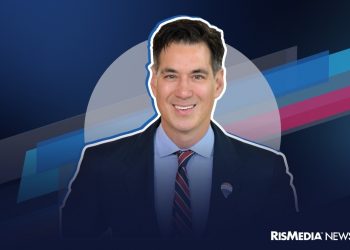RISMEDIA, March 5, 2009-(MCT)-Hoping to vault over the frozen credit markets and directly reach consumers and businesses, the Federal Reserve and Treasury Department unveiled a $200 billion plan they hope will spur up to $1 trillion in new lending.
If the program works, it could allow consumers and businesses with good credit histories to borrow more freely, even amid the recession.
Treasury and the Fed will provide $200 billion in financing to encourage investors to purchase top-rated loans whose underlying collateral is pools of car loans, student loans, credit card debt and loans to small businesses.
The Term Asset-Backed Lending Facility isn’t a magic bullet. It will apply only to the safest of loans and the healthiest of financial institutions, so it can’t fix all of what ails the credit markets and the broader economy.
The Fed seeks, however, to show investors that it’s safe to get back in the water. The plan builds on a similar effort last year to bypass banks and have the Fed buy the short-term debt issued by corporations. This has allowed big U.S. corporations to avert a funding crisis while the credit markets remained seized up.
“Think about it as the Fed in the period of the crisis being not a central bank but a commercial bank … and doing the functional equivalent of buying loans. It’s funding loans as an interim measure,” said Alex Pollock, a former president of the Federal Home Loan Bank of Chicago.
Right now, banks aren’t willing to lend and are parking their reserves at the Fed, said Pollock, now a senior fellow at the American Enterprise Institute, a conservative research group in Washington. It’s the equivalent of average Americans stuffing their money in a box and sticking it under the bed. Rather than keep money under the bed, the Fed is lending it out to people it believes it can trust.
For much of the past 15 years, a wide range of loans had been bundled together and sold to investors through a process called securitization. It freed banks to lend more because these loans, or asset-backed securities, were transferred off their books into a secondary market outside the banking system.
Securitization allowed consumer finance to expand far and wide. In recent years, about a quarter of all lending to consumer-including home mortgages, credit cards, car loans and student loans-was securitized.
This market, however, is all but dead, weighed down by home mortgages amid plummeting property values and rising foreclosures. Weak mortgage-lending practices also poisoned the well for other types of lending. Investors have come to doubt even the stability of securities backed by car loans and student loans, and fear defaults will rise as the recession deepens.
“These markets have historically been a critical component of lending in our financial system, but they have been virtually shuttered since the worsening of the financial crisis in October,” the joint Treasury-Fed statement said. “By reopening these markets, the (plan) will assist lenders in meeting the borrowing needs of consumers and small businesses, helping to stimulate the broader economy.”
The Federal Reserve Bank of New York will lend up to $200 billion through the end of the year to hedge funds, private equity funds and other institutional and professional investors to support their purchase of the top-rated, safest loans.
“It will help thaw our important, but now largely frozen, non-bank financial markets so they can go back to generating the credit that families and businesses must have,” Treasury Secretary Timothy Geithner told the House Ways and Means Committee on Tuesday.
Private sector investors and issuers of securities can apply by March 17 for the special financing. Funding will begin March 25. First up this month will be consumer, student and small-business loans.
In April, the program will begin to cover pools of car loans or leases for rental, commercial and government vehicles, as well as loans for heavy equipment and agricultural equipment. Later in the year, the government could provide financing to securitize new loans for residential and commercial mortgages.
Testifying before the Senate Banking Committee Tuesday, Fed Chairman Ben Bernanke singled out commercial mortgages as an area that he hopes will be most helped by the new effort.
“We know right now (that) there is a looming crisis in commercial real estate,” Bernanke said, noting that hotel and shopping mall developers can’t refinance or pay for new construction because the market for pools of commercial mortgages has “shut down.”
© 2009, McClatchy-Tribune Information Services.










